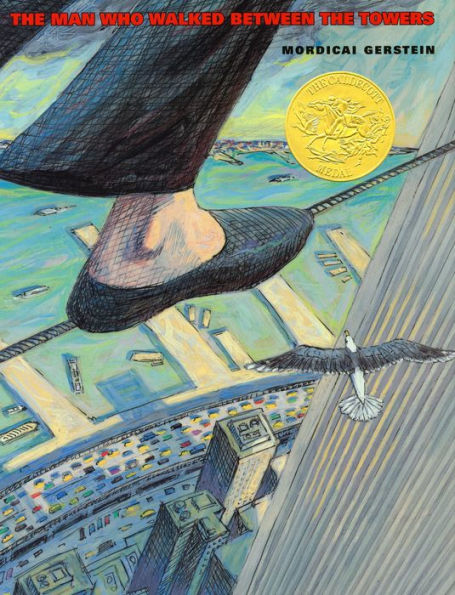The Washington Post
Gerstein's ink and oil paintings of that "joyful morning" aren't for anyone with a fear of heights; the perspectives are dizzying enough to make the strongest stomach lurch.
— Elizabeth Ward
Kirkus Reviews
A spare recounting of Philippe Petit's daring 1974 wire walk between the Twin Towers depicts him as a street performer who defies authority to risk his feat, is arrested, and then sentenced to perform for the children of New York. At the conclusion, on the only non-illustrated page are the stark words, "Now the towers are gone," followed by the changed skyline and finally by a skyline on which are etched the ghost-like shapes of the towers as memory of the buildings and of Petit's exploit. At the heart are the spreads of Petit on the narrow wire, so far above the city that Earth's curve is visible. Two ingenious gatefolds draw readers' eyes into the vertiginous sweep of wirewalker-sky and city below. Unparalleled use of perspective and line-architectural verticals opposed to the curve of wires and earth-underscore disequilibrium and freedom. In a story that's all about balance, the illustrations display it exquisitely in composition. Readers of all ages will return to this again and again for its history, adventure, humor, and breathtaking homage to extraordinary buildings and a remarkable man. (Picture book/nonfiction. 5+)
From the Publisher
Gerstein's dramatic paintings include some perspectives bound to take any reader's breath away. Truly affecting.” —Publishers Weekly (Starred Review)
“Readers of all ages will return to this again and again for its history, adventure, humor, and breathtaking homage to extraordinary buildings and a remarkable man.” —Kirkus Reviews (Starred Review)
“With its graceful majesty and mythic overtones, this unique and uplifting book is at once a portrait of a larger-than-life individual and a memorial to the towers and the lives associated with them.” —School Library Journal (Starred Review)




